Future uncertain for Great Lakes temperatures
3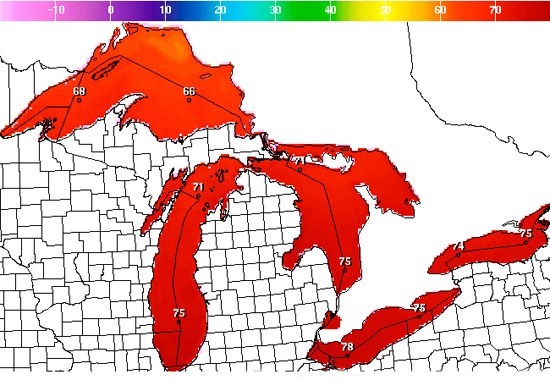
A map of Great Lakes temperatures (in Fahrenheit) from this morning generated by the National Weather Service.
The Great Lakes have been experiencing temperatures this summer that have approached or met record highs from over the past 30 years. While the cause is known, researchers are unsure whether this trend will continue into future summers.
A data buoy in western Lake Superior recorded 71 degrees last week, which is one degree off the record, according to The Muscatine Journal. The temperature in the lake is usually around 60 degrees this time of year.
The higher temperatures are the result of less ice cover over the Great Lakes this past winter, according to Jay Austin, a physics professor at the Large Lakes Observatory in Duluth, Minn.
Total ice cover on the lake has diminished by roughly 30 percent over the last 37 years, said Cameron Davis, senior adviser to the Environmental Protection Agency on the Great Lakes. Less ice means more water can evaporate, resulting in lower than usual water levels. In fact, water levels of all five Great Lakes approached record lows during the past decade until rebounding slightly over the last few years.
Additionally, while warmer temperatures have increased the lake’s appeal to tourists, it’s also made it easier for invasive species to thrive.
As we reported in March, University of Wisconsin zoology professor Jim Kitchell believes there is a trend between Superior’s rising temperatures and the proliferation of the blood-sucking sea lamprey. Lampreys use their round, toothy mouths to attach to fish and suck their blood, often until they die. The invasive species can grow larger and reproduce faster in warmer conditions, according to Kitchell, and as they grow they can prey on more and larger fish.
The invasive zebra mussels may also benefit from the warmer temperatures, according to Tom Gorenflo, tribal fisheries manager for the Chippewa-Ottawa Resource Authority in Sault St. Marie, Mich. Zebra mussels tend to thrive more easily in smaller lakes with warmer temperatures, he said, but their ability to spread through the Great Lakes will be easier as temperatures rise.
Researchers aren’t yet sure whether these warmer conditions will return next summer. Present conditions could result in lower ice levels in the winter, Austin said, but an exceptionally cold winter could return temperatures to normal by next summer.
“There’s a ton of variability from year to year in these types of systems,” Austin said. He added, however, ice on Lake Superior has been decreasing over the last three decades.
What are your thoughts on the causes and effects of rising Great Lakes temperatures? Share your thoughts in the comments below.
Warmer Great Lakes: Nice for a dip, but worrisome [The Muscatine Journal] Lake Superior, a Huge Natural Climate Change Gauge, Is Running a Fever [The New York Times]
Image Credit: http://www.crh.noaa.gov/greatlakes/?c=map&l=gl&p=a&m=te




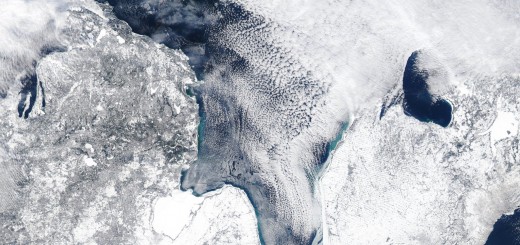
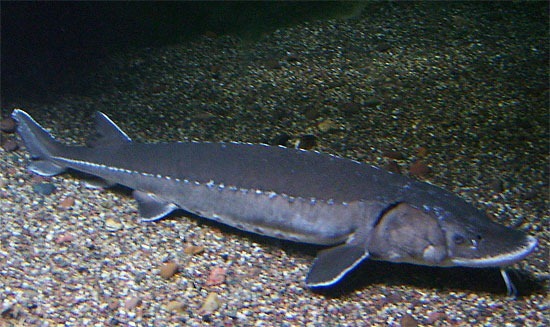
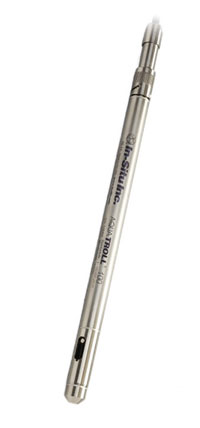
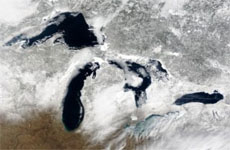






[…] combination of this raw waste and warmer water temperatures creates a productive breeding ground for harmful bacteria, such as E. coli. E. coli also thrives […]
[…] the Great Lakes have been showing all-time high water temperatures this summer, as a result of diminished ice cover last […]
[…] Researchers Philipp Schneider and Simon Hook of NASA’s Jet Propulsion Laboratory used thermal infrared satellite imagery data to measure the surface temperatures of 167 lakes scattered across the planet. The results show an average warming rate of 0.45 degrees Celsius per decade. Some lakes are warming as rapidly as 1 degree Celsius per decade. This satellite data agrees with Great Lakes buoy data, which showed record-high temperatures this summer. […]